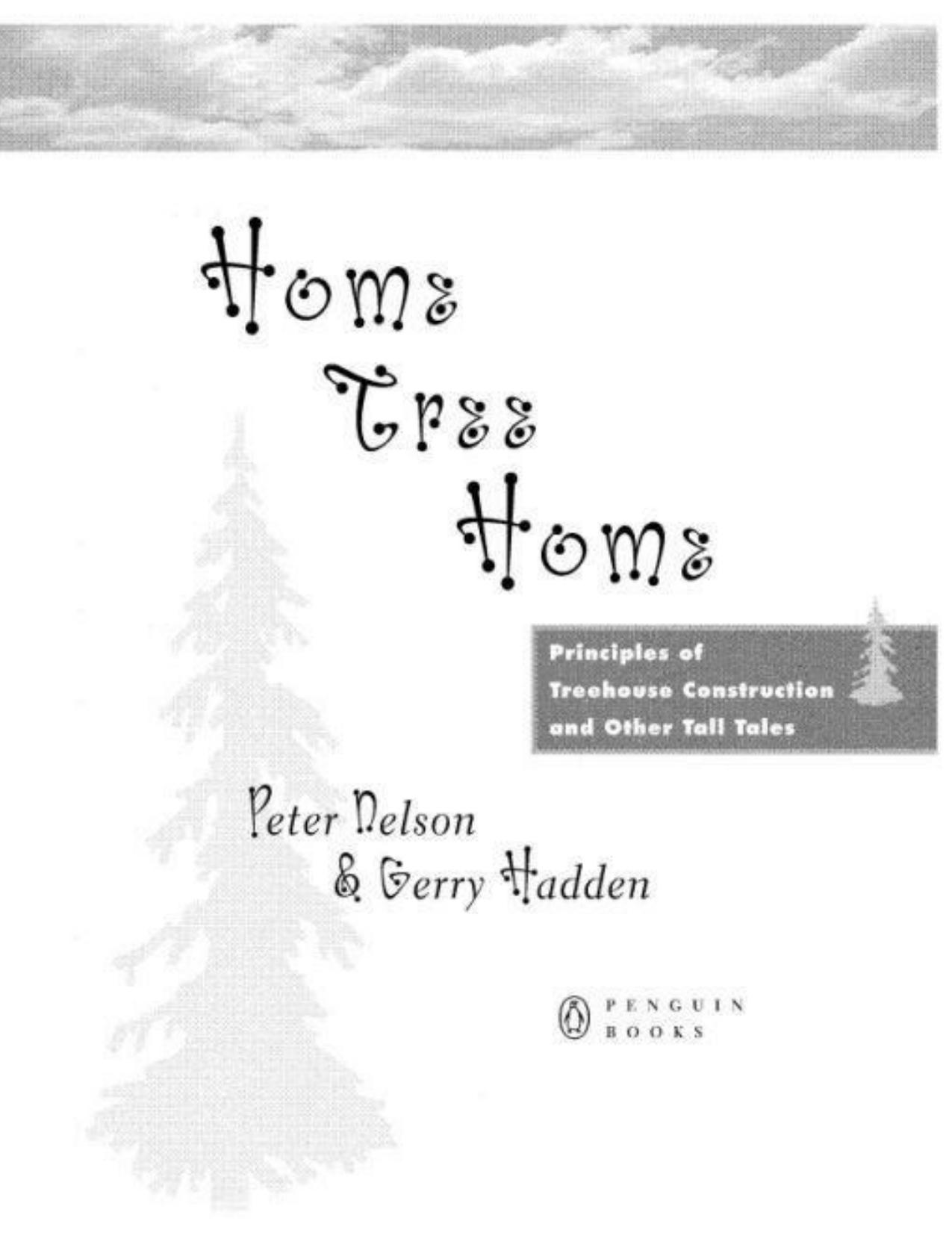Home Tree Home: Principles of Treehouse Construction and Other Tall Tales by Nelson Peter N. & Gerry Hadden

Author:Nelson, Peter N. & Gerry Hadden [Nelson, Peter N.]
Language: eng
Format: epub, pdf
Publisher: Penguin Books
Published: 1997-08-01T00:00:00+00:00
Laying Down the Floor
Now you’re ready to lay down the ¾-inch tongue-and-groove plywood floor. The tongue and groove is great because it adds support to the floor over the spaces where there is no joist. Without it you’d have to block underneath the seam for added support. We started flooring on the southeast corner.
I Ioist the plywood up using the pulley. Run a line of subfloor glue on the joists where the first piece of plywood will lie. Lay down that first piece with the long grooved edge along the east edge of the rim joist. Nail it down using 10-penny galvanized or ring shank nails. When that edge is in, look to see that things remain square, and nail down the rest of the plywood sheet. To make it easier to hit the joists with my nails I snap a chalk line on the face of the plywood that marks the center of the joists running underneath.
Before nailing the second sheet of plywood along the east rim joist, we consulted the floor plan to see what was required. In Albert’s case it called for plywood only in the spaces that were to be covered by enclosed spaces; the rest was to be decked with 2 × 6-inch cedar. The footprint of the enclosed area was 11 × 7 feet in this section of the treehouse, with the 11-foot dimension running along the cast rim. This indicated an overall length for our second sheet of plywood of just 3 feet (11 feet minus the 8 feet of the first sheet already installed). Notice on the floor framing plan that an independent joist was installed to accommodate the butt end of this plywood at this uneven distance.
To complete this section of flooring go back to the south end of the platform and rip a piece of plywood (cut in the long dimension) to 3 feet wide. Be sure to take off the tongue side so the tongue and groove will fit properly. With this piece we ran into a situation common in treehouse construction: we needed to scribe a cut to fit around the tree trunk. For this, I like to leave about an inch of space between the bark and plywood. The following section describes how to properly scribe and cut this 3 × 8-foot sheet of plywood.
Download
Home Tree Home: Principles of Treehouse Construction and Other Tall Tales by Nelson Peter N. & Gerry Hadden.pdf
This site does not store any files on its server. We only index and link to content provided by other sites. Please contact the content providers to delete copyright contents if any and email us, we'll remove relevant links or contents immediately.
The Body: A Guide for Occupants by Bill Bryson(4974)
Audition by Ryu Murakami(4850)
Adulting by Kelly Williams Brown(4487)
Housekeeping by Marilynne Robinson(4347)
Be in a Treehouse by Pete Nelson(3948)
Zero Waste Home by Bea Johnson(3780)
Seriously... I'm Kidding by Ellen DeGeneres(3577)
Better Homes and Gardens New Cookbook by Better Homes & Gardens(3525)
The Healing Self by Deepak Chopra(3474)
Barkskins by Annie Proulx(3313)
Hedgerow by John Wright(3276)
The Cellar by Natasha Preston(3262)
Spark Joy by Marie Kondo(3249)
The Genius of Japanese Carpentry by Azby Brown(3224)
The Life-Changing Magic Of Tidying Up- The Japanese Art Of Decluttering And Organizing (v5.0) by Marie Kondo(3211)
120 Days of Sodom by Marquis de Sade(3180)
Work Clean by Dan Charnas(3048)
The Book of Numbers by Peter Bentley(2912)
A Monk's Guide to a Clean House and Mind by Shoukei Matsumoto(2868)
